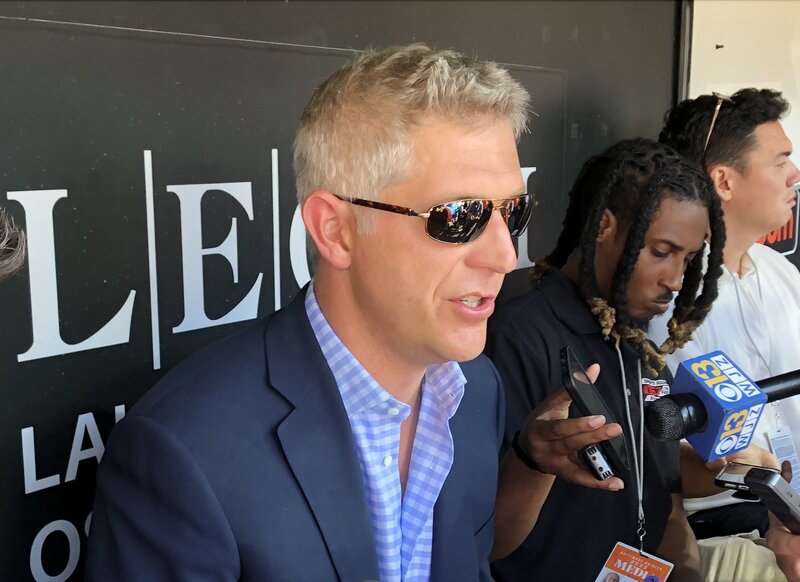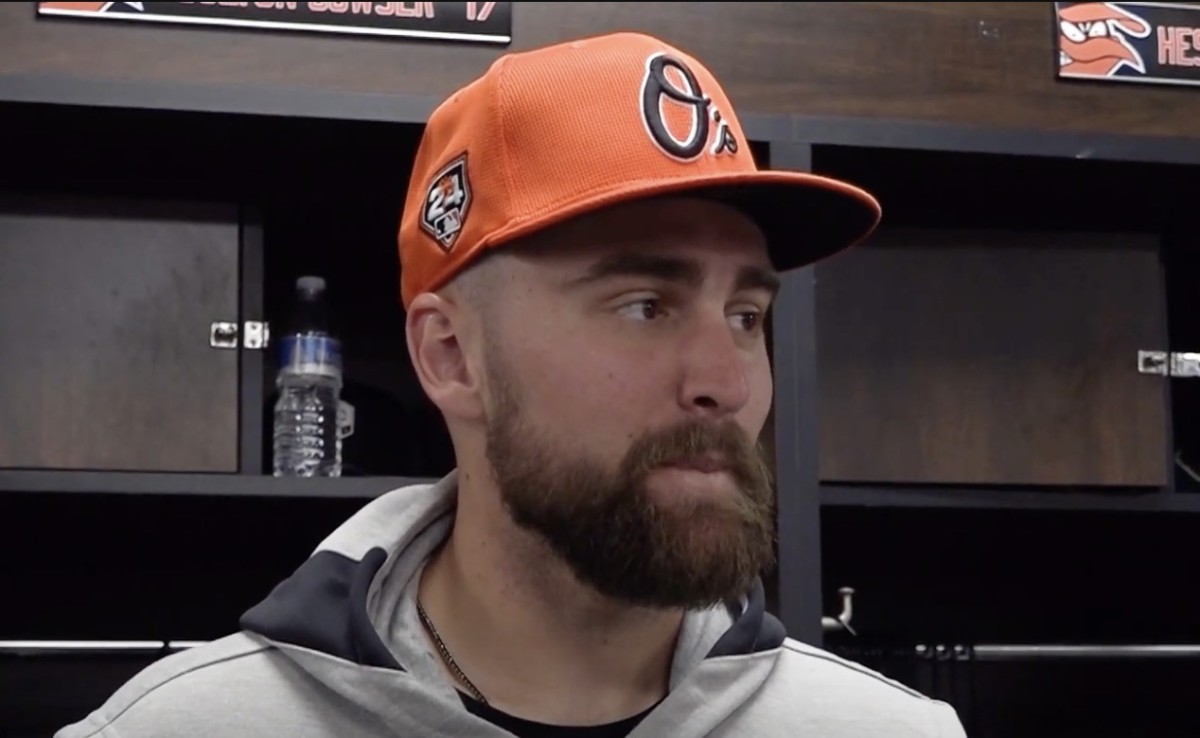I’m live in New York at the Sports Business Journal Sports Media & Technology Conference. You can follow all of the correspondence from this event on Twitter at #sbjsmt. For those of you who hate reading about sports “business” or anything more than the latest drama regarding the Ravens’ secondary, this will bore you. But for those of you who REALLY follow WNST and are sophisticated about my personal growth as a new media zealot (and hopefully, one day, a guru) this will be compelling information.
Needless to say, I love to learn and I love sports and I love sports media and I love technology. So this is right up my alley.
I’ll be breaking my observations up into segments from the panels of the day.
You can see the various panels and topics here...
I’ll be blogging all day and adding to this piece and I hope you enjoy some of the conversations and observations.
*********
Big screen vs. small screen and where is cable TV headed?
We’re all paying for cable TV becaue that’s what we’ve always done.
But what will that look like in three years? Or five years?
We’ve all seen and felt the myriad of changes via smart phones and mobile devices that have become the remote control for our lives. Things are changing rapidly. And no one knows where this going.
Not even the host-shot executives who run Comcast and Fox Sports and DirecTV. At this point, we still pay our $80 a month for “cable TV” but what will it mean when EVERYONE has a mobile device and prefers that intimate experience to “watching TV.”
I know how differently I’ve interacted with the world since my Droid came into my life last November.
The cable companies and the sports franchises are in business together. They are partners. The TV helps the teams sell tickets, sex appeal, excitement but the whole notion of “going to the game” means you miss the game at home and vice versa.
But in the end it’s all about branding and emotional appeal. If you love the Ravens – as many of you do – you’ll follow Ravens information wherever it is that is reputable, accurate and – most importantly – where it’s convenient for you.
And that’s the biggest sea change in the world of media.
Ten years ago there was the newspaper, local TV news and faceless AM radio for the most part.
Now, via the internet and mobile devices, any forward-thinking person is getting their information from their mobile device and the market share is shifting dramatically as no one will ever be able to buy “a cell phone” ever again. They just won’t make them and even the oldest, stodgiest fuddy duddy will have to learn to use an IPhone or Droid and whatever offspring that we can’t even imagine yet.
Really, how many of you that have a smart phone ever fathomed life on Twitter or Facebook or text even five years and certainly not a decade ago.
****
Social Media Development in Sports
Obviously, this is the strongest growth area for WNST.net so I’m quite engaged.
The first topic is how sports team are using Twitter and Facebook to engage fans. There are two schools of thought: offense and defense.
The greatest example is an old-school guy like John Harbaugh, who is constantly playing defense, like there is no Facebook, human interaction or open-source questions about the team’s performance or policy. Like the 15 scared media members in the room are the ONLY ones who can publicly criticize or hurt the team. I see this every day and I only use Harbs as an example.
Teams, coaches and franchise owners have to cede control of their message to the masses and this has all happened in the last 12 months via Twitter. Imagine how the NBA tries to control Shaquille O’Neal. Or how the NFL really feels about Chad Ochocino’s tweets. Or even locally how the Ravens (and Harbaugh) feel about Le’Ron McClain’s tweets regarding wanting to be the starting running back for the team in every tweet since July.
These were consumer messages that the team’s dreaded for the last 50 years and they’re now a reality.
On stage is my friend Kurt Kehl, who is talking about the most open social media owner in the history of professional sports (and a partner of ours at WNST.net), Ted Leonsis. Leonsis uses social media as an “offense” and uses his voice often.
Leonsis views himself as his own media company and brand. He gets his message out in real time to anyone who care’s to read Ted’s Take and he invites bloggers to write about the Capitals and Wizards and answers criticisms of the franchises via his blog.
I guess this was my point from above. This stuff is changing SO RAPIDLY that EVERYONE will view the proliferation of social media and hand-held, instant media devices in different ways based on their world per-view and where they are on the curve of learning about the changes.
There are still many people inside the Ravens front office who still read a physical newspaper every day because they’re a part of the over-50, white male crowd, which is about all that The Baltimore Sun as a printed product has left. To those people, Mike Preston is still relevant, even if he’s really NOT relevant at all as a social media voice because he doesn’t use. Every day his brand and the brand of The Sun dies a little bit and atrophies.
And teams and leagues are affected mostly by how their leaders perceive and use all of the powerful, earth-is-flat tools that are now available.
If you’re not on Twitter or Facebook, there is NO WAY for you to understand it.
And if you are involved in social media, you know that it’s pretty intoxicating and it’s not a “trend” or a “fad.”
Social media and smart phones aren’t just here to stay. They’re very, very rapidly ruling the world of sports. And if you doubt that, just follow @WNST on Twitter on any gameday Sunday and see why we’re growing and the rest of the Baltimore sports media is either stagnant or shrinking.
More to come all day from New York…

































